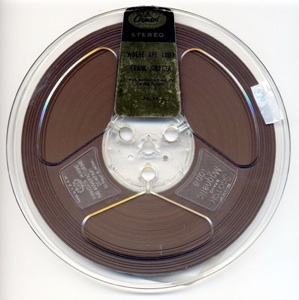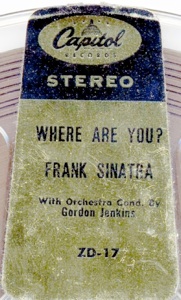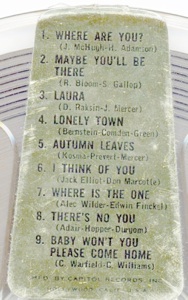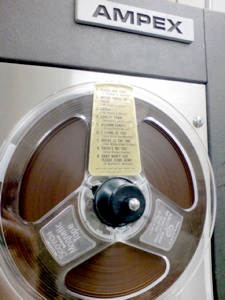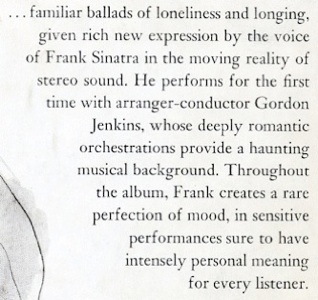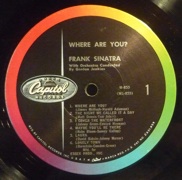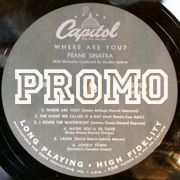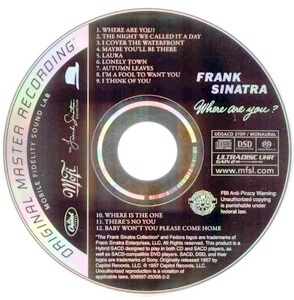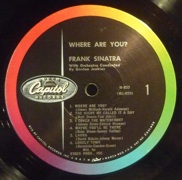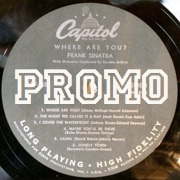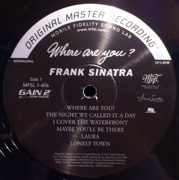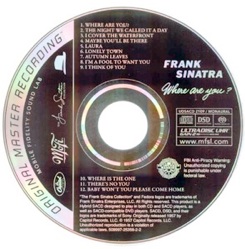Where Are You? - 1957

Recorded April 10,
April 29, May 1, 1957
Arrangements: Gordon Jenkins
Conducted by Gordon Jenkins
Produced by Dave Cavanaugh
Released September 2, 1957 (mono);
January, 1958 (abridged stereo tape);
February, 1959 (abridged stereo LP);
Late 1971 (unabridged stereo/mono)
“...the moving reality of stereo sound.....”
Sinatra’s first home-format stereo release:
Capitol tape #ZD-17, January, 1958 (abridged)
(Thanks to Bob F. for his wealth of information regarding this and all other Sinatra albums in this survey.)
As originally released September 2, 1957, four months prior to any stereo release, this is the official, original concept for this album: 12 songs, in the original running order, as originally intended by Mr. Sinatra and producer Dave Cavanaugh, complete with the approved takes and edits on each song, multi-miked in the classic Capitol hi-fi mono sound of the time period. The mono release is definitively the original “package deal” for this album, and the mono recording itself is quite lovely, as evidenced by the clips below. (All samples mirror the iTunes samples, freely available, above right, by clicking VIEW.)
To hear audio clips, click the photo.
Samples from the title track:
The very first Sinatra Capitol stereo release was not on LP, but on reel-to-reel tape.

(Click on accompanying photos (below) to hear brief stereo audio samples. All clips align with the iTunes free samples, available at the bottom of the page via the VIEW button in the iTunes link.)
In 1957, Capitol released its newest Sinatra collection, Where Are You, in two vinyl formats. Virtually everybody who purchased the album heard it in mono either on Capitol 12” LP #W-855, or on Capitol 7” EP, set #EBF1- and EBF2-855, or their corresponding foreign releases. However, in early January, 1958, an infinitesimally small number of Sinatra fans -- those who had plenty of $$$, plus a stereo tape player, plus stereo amplification and speakers -- forked over $122.71 in 2014 cash (link) to hear most of Where Are you in genuine stereo. (3/4ths of the album was on the tape release, which was limited to about a 30 minute running time.) Even moreso than today’s SACD products, this was a truly “boutique” item for the fanatical stereo fan and/or the wealthy enthusiast with a playful audio spirit.
In years to come, most of Sinatra’s Capitol albums would be released on 4-track (aka “quarter-track”) tape at either 7.5 or 3.75 ips, in lower quality, with increased hiss and noise, and the potential for reverse-direction crosstalk. ZD-17 is not from that series of releases. This is a simple two-track tape, playing in one direction only, in very high quality. It is also a unique stereo mix, mastered directly to a 7.5 ips master reel at Capitol. All other stereo issues contain different, later mixes.
My thanks to my dear friend Dave Dintenfass at Full Track Productions in Seattle for his help with the transfer from an Ampex AG-440 to digital, which you can sample in WAV format by clicking on the accompanying photos. (Note: each sample mirrors the free sample clips available on iTunes.)
Click photos to hear brief audio clips from reel #ZD-17.
As mentioned, there was a time limit of about 30 minutes per reel, so only nine of the twelve album tracks were included. There was, however, a tenth track, “I’m a Fool to Want You,” included on a 2-track compilation reel, “Stars in Stereo,” released simultaneously with the other tape tracks. To hear a clip from that track, click here: I'maFoolRawTransferClip.wav (Below are some photos, but no additional audio.)
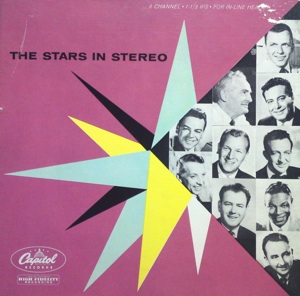
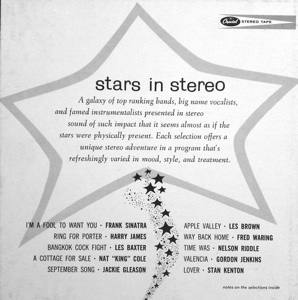
Click here to move on to page two.
Also, please join the discussion of this album at the Steve Hoffman Music Forum.
It’s safe to say that at least some (most?) copies of “The Stars in Stereo” had a manufacturing defect. I now personally own four copies, and three of them, plus a copy that was snail-mailed to me by a friend at SHTV, are defective -- some minimally, some quite strongly -- on track one, the Sinatra track. Likewise, Ebay seller Paulroarck recently posted this when selling a copy of “The Stars in Stereo:”

Good copies are out there, but my advice is: buyer beware!

To my ears, the recent MFSL releases are a clear improvement over most earlier versions of the mono mix, even the vaunted “D” pressings, and one contributing factor is the open dynamics that have been missing on so many editions. At right, check out the difference in dynamics as presented on my excellent-sounding D7 pressing compared to the SACD from MFSL. Clearly, dynamic compromises appear on vintage Capitol LP pressings that are not made on the new MFSL presentations.
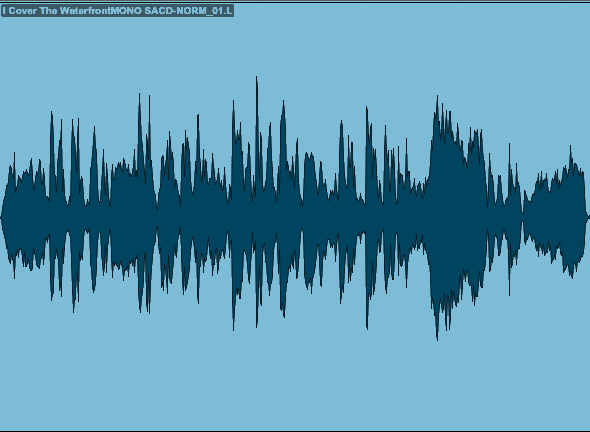



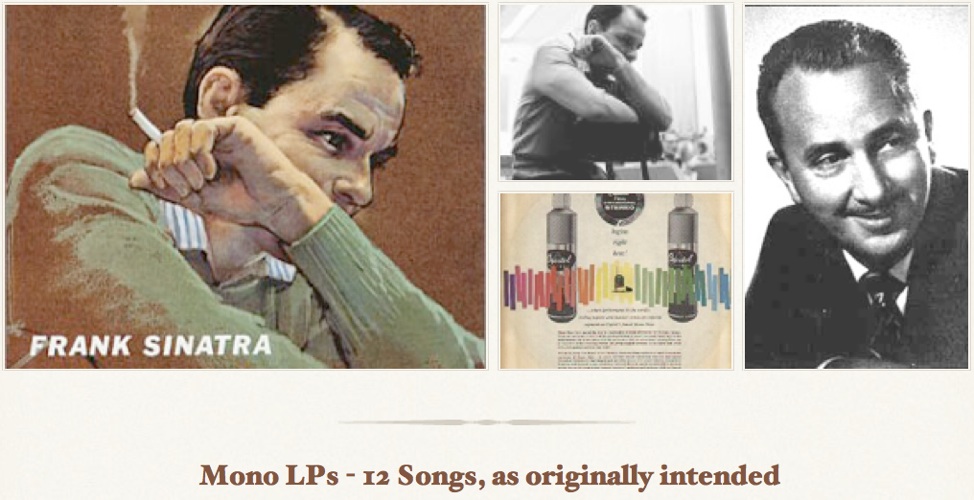
Above: D1#4 LP
Above: D7 LP
Above: N8 promo LP, courtesy stevelucille

Above: 2012 MFSL LP, mastered by Krieg Wunderlich
Samples from “I Cover the Waterfront” -
The 2013 MFSL Hybrid SACD Mono Release
Here’s a clip from the CD layer of this excellent release, courtesy SH.TV member Howlinrock. Photo courtesy Bob F.

Above: D1#4 LP
Above: D7 LP
Above: N8 promo LP, courtesy stevelucille

Above: D1#2 LP (poor condition)
Above: early UK LP, courtesy greg1954
Above: 2012 MFSL LP, mastered by Krieg Wunderlich, courtesy SHTV’s TLMusic
The 2013 MFSL Hybrid SACD Mono
Release
Here’s a clip from the CD
layer of this excellent release,
courtesy SH.TV member
Howlinrock. Photo courtesy
Bob F.

While many filmgoers first heard Sinatra in 4-channel stereo in May, 1954, as he sang the opening theme to Three Coins in a Fountain, here we have Sinatra’s first stereo recordings from the Capitol Tower and first stereo recordings released for home (not cinema) playback, recorded roughly three months after Nat Cole’s landmark Love is the Thing project of December, 1956, and, like that project, recorded by two engineering teams* using two control rooms and two sets of orchestral microphones. I have seen a photo, reproduced at right, of Cole and Jenkins that appears to show a pair of RCA 44-BX ribbon mics being used for the orchestral pickups, and I suspect that the same technique may be used here, as there is a “hole in the middle” that certainly sounds like it could be from spaced figure-8 [bi-directional] microphones, but I cannot say for sure. The RCA 44 series has been long praised for its “string sound,” and since this is essentially a string orchestra, the use of the RCAs would certainly be within the realm of possibility.) There is also what looks like it may be an EMI Stereosonic microphone (between the two RCA mics). This mic was given to Capitol by UK corporate parent EMI in the early days of stereo, but was not well liked by engineer Carson Taylor. who moved to the Neumann SM-2 and went on to favor the Neumann SM-69 stereo microphone.
(*or more precisely: likely a lead engineer who oversaw both setups and oversaw the live mono mix, with an assistant who oversaw the stereo tracking, with actual mixing done later.)
For Where Are You, while the thought of stereo is all well and good, the primary objective was still to get a high-quality mono recording, with stereo being relegated to a distant second-fiddle position, since mono was still king in terms of sales. (Truthfully, outside of the film world, stereo was barely a blip on the radar in 1957. This is Cinerama led to the advent of magnetic stereo sound in large theatres in large cities, but stereo for the home was, at this point, something that only the most devoted “hi-fi nuts” managed to set up, and the recordings available to them were limited to a few awkward-at-best LPs using Emory Cook’s dual-groove system, and a very limited set of stereo reel-to-reel tapes, almost exclusively containing classical music and sound effects. Stereo LPs in the now-common Westrex 45/45 system were still nearly a year away.)
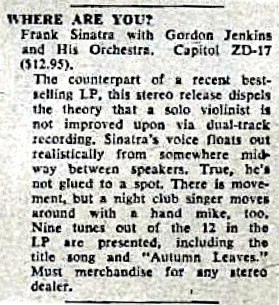

Pictures can be deceiving, but at least at first glance that appears to be two RCA 44-series ribbon mics being used for stereo, one on either side of the podium. They look a little “low and close” for stereo, but then again, if they were used for mono, I would expect some phase issues, so....who knows?
Photo from the MPTV archive website, with thanks to SHF member “Bob F.”

“Must Merchandise for Any Stereo Dealer.”
- Billboard, February 3, 1958.

Above: N22#3 LP, courtesy “Arkoffs”
